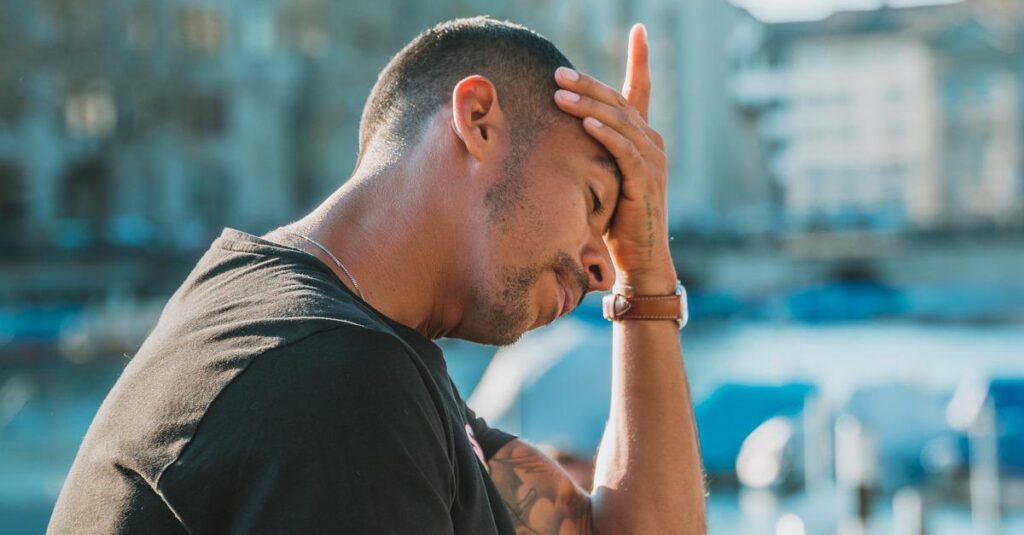

Scuba diving can cause migraines, but divers usually have a history of migraines. Most head pain that scuba divers suffer from is more mild and pressure-related or related to gas toxicity.
This article explains many types of headaches that show up after diving, what causes them, and how you can prevent them. We also explain how headaches affect you during a dive and how diving might affect the brain.
Why Do I Have a Headache after Freediving?
Freedivers get headaches for the same reason that scuba divers might. This includes:
- Sinus headaches
- Tension headaches
- Carbon dioxide or carbon monoxide toxicity headaches
- Decompression sickness headaches (less common)
The causes of these headaches vary depending on the type of headache and its symptoms, but they’re usually related to squeezes from ascent or descent and muscle strain during the dive. Toxicity headaches during freediving may be from improper breathing techniques.
Types of Diving-Related Headaches
The headaches you get while diving may have any number of causes. Some of the most specific include:
- Dental problems
- Cold water (with insufficient insulation around the head)
- Saltwater aspiration
- History of migraines
If you’re unaware of any preexisting conditions, it may be a normal or concerning side effect of your dive.
Decompression Sickness Headaches
Decompression sickness headaches usually come after rapid ascent, and they are accompanied by other DCS symptoms such as:
- Joint pain
- Swelling
- Skin rash and/or itching
- Dizziness
- Nausea and/or vomiting
- Tinnitus
- Extreme exhaustion
Anyone with a combination of symptoms, especially after a quick ascent or deep dive, should seek medical attention.
Sinus Headaches
Your sinuses are more sensitive to the changes in pressure during ascent and descent, and you may get a sinus headache if the equalizing pressure is insufficient. This can happen due to poor execution or inflammation in your sinuses and nasal cavity from allergies or a cold.
Sinus headaches are marked by pain in:
- The forehead
- The face
- The cheekbone area
You can prevent sinus headaches by slowing your speed or using diving-approved decongestants (to control mild symptoms not related to illness–it’s inadvisable to dive while sick).
Tension Headaches
Any pain in the head or at the back of the neck post-dive is likely a tension headache from muscle strain during your dive. These happen most often to divers with anxiety that keep their muscles rigid (i.e. clenching your jaw).
You should learn how to relax in the water to prevent tension headaches. This usually happens over time as you gain experience and become more comfortable in the water. You may need to actively condition this feeling through practice.
Migraines
Migraines are extremely painful, and symptoms include:
- Visual changes
- Numbness of your arm
- Nausea
- Post-dive vomiting
Those with a history of migraines are more likely to have one either during or after the dive, but there’s believed to be a direct correlation between diving and cranial pressure that may trigger them.
Keep in mind that many medications used to treat migraines can increase your risk of nitrogen narcosis.
Carbon Dioxide Toxicity Headaches
Dull pulsing pain indicates carbon dioxide toxicity, usually from hypoventilation. This happens when you aren’t taking large breaths from your tank or you’re not breathing as often. Inefficient dive equipment can also lead to toxicity, usually at depths below 100 feet (30 meters).
Carbon dioxide is more narcotic than nitrogen, and you can prevent buildup by taking slow, deep breaths. Regulators should have good flow.
Carbon Monoxide Toxicity Headaches
Suspect carbon monoxide toxicity if your pain is tight across your forehead and accompanied by:
- Dizziness
- Nausea
- Vomiting
Carbon monoxide poisoning often comes from a contaminated air supply. Faulty or poorly maintained compressors used to fill tanks can leave traces of lubricant oil in your air that contain carbon monoxide. This can happen by accident, but working with a dive shop that prioritizes quality can limit the risk.
If you suspect carbon monoxide toxicity, you should get out of the water immediately and get on oxygen before seeking medical attention. Most treatment plays use a hyperbaric oxygen therapy.
Is It Ok to Scuba Dive with a Headache?
It’s okay to scuba dive with a mild headache, but it’s not ideal. If it happens while you’re diving and doesn’t get worse or impede function, you should be fine. If it starts to worsen, you should surface and try to figure out the cause of the headache.
If you have a headache before your dive you should wait to see if it passes. The odds of the headache getting any better underwater are slim when you consider the increase in pressure and the strain on your body.
How Do You Relieve Pressure in Your Head from Scuba Diving?
You reduce pressure in your head from scuba diving by equalizing your air spaces. There are a few different techniques you should know and practice:
- Valsalva: holding your nose and breathing against your closed throat
- Toynbee: swallowing with a closed nose and mouth
- Frenzel: same as Valsalva; contracting throat muscles while closed
- Lowry: combines Valsalva and Toynbee; hold nose and try to blow air out of it while you swallow
- Edmonds: pushing your jaw forward while performing Valsalva or Frenzel
Swallowing or wiggling your jaw can also help. You should equalize early and often, usually every half a meter.
How Does Scuba Diving Affect the Brain?
There is little research in how normal scuba diving activities affect the brain in both the short term and the long term.
Most of the effects come from accidents or injury, such as head trauma, gas embolism, cerebral hypoxia, or stroke. These can cause you to lose brain cells, and losing oxygen to the brain for long enough can cause irreparable damage.
References
https://www.dansa.org/blog/2016/08/06/release-the-pressure
https://www.tdisdi.com/sdi-diver-news/headaches-and-scuba-diving/
https://www.ddrc.org/diving/can-i-dive/can-i-dive-migraines/
